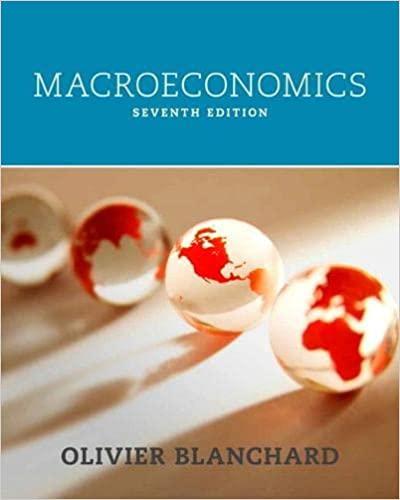Multipliers, openness, and fiscal policy Consider an open economy characterized by the following equations: [ begin{aligned} C
Question:
Multipliers, openness, and fiscal policy Consider an open economy characterized by the following equations:
\[
\begin{aligned}
C & =c_{0}+c_{1}(Y-T) \\
I & =d_{0}+d_{1} Y \\
I M & =m_{1} Y \\
X & =x_{1} Y^{*}
\end{aligned}
\]
The parameters \(m_{1}\) and \(x_{1}\) are the propensities to import and export. Assume that the real exchange rate is fixed at a value of 1 and treat foreign income, \(Y^{*}\), as fixed. Also assume that taxes are fixed and that government purchases are exogenous (i.e., decided by the government). We explore the effectiveness of changes in \(G\) under alternative assumptions about the propensity to import.
a. Write the equilibrium condition in the market for domestic goods and solve for \(Y\).
b. Suppose government purchases increase by one unit. What is the effect on output? (Assume that \(0
c. How do net exports change when government purchases increase by one unit?
Now consider two economies, one with \(m_{1}=0.5\) and the other with \(m_{1}=0.1\). Each economy is characterized by \(\left(c_{1}+d_{1}ight)=0.6\).
d. Suppose one of the economies is much larger than the other. Which economy do you expect to have the larger value of \(m_{1}\) ? Explain.
e. Calculate your answers to parts
(b) and
(c) for each economy by substituting the appropriate parameter values.
f. In which economy will fiscal policy have a larger effect on output? In which economy will fiscal policy have a larger effect on net exports?
Step by Step Answer:






